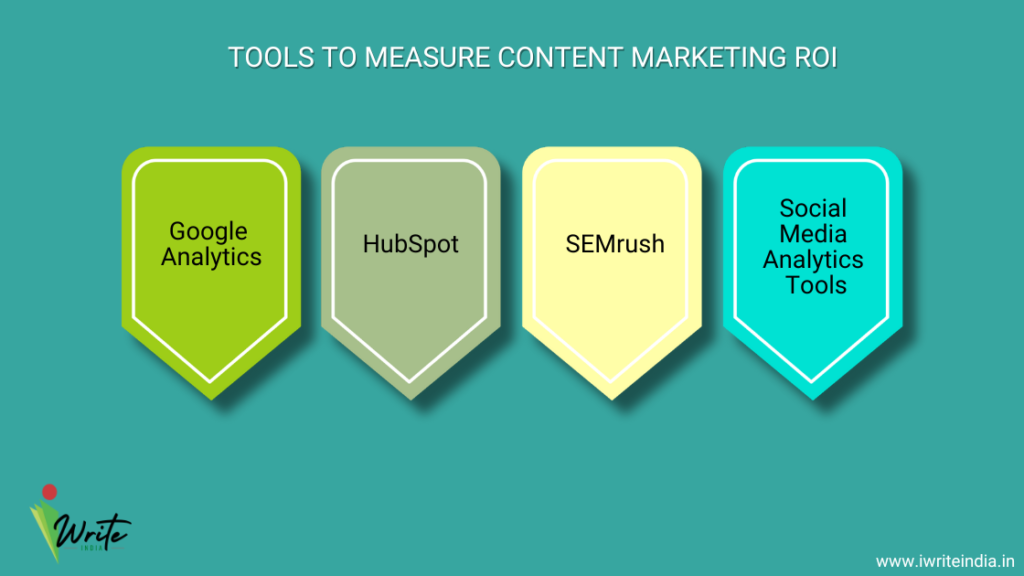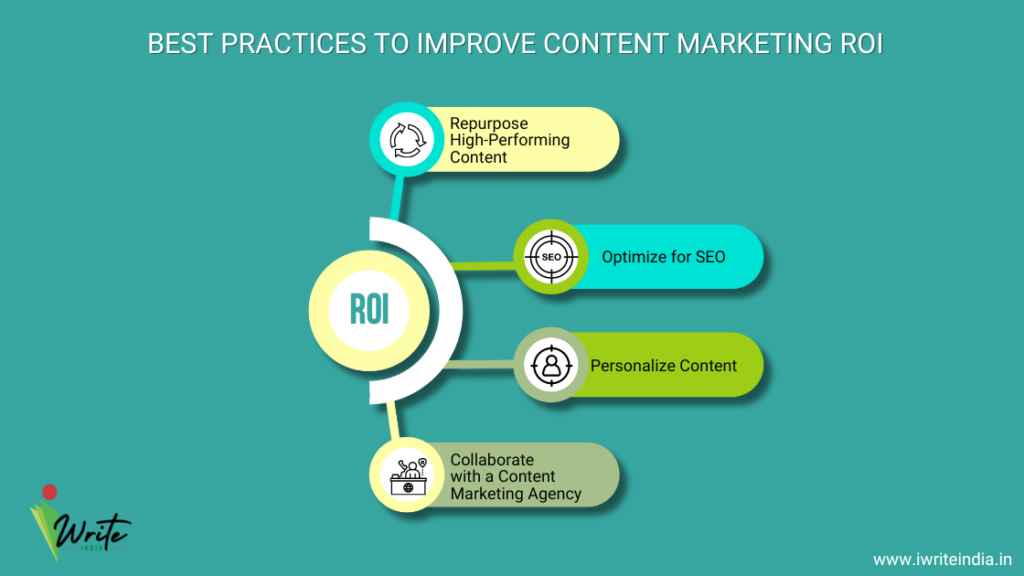
Content marketing is no longer a nice-to-have; it’s a must-have for businesses seeking growth. Yet, a common question many marketers ask is: “How do we know if our content marketing efforts are paying off?” The answer lies in understanding and accurately measuring content marketing ROI.
Return on investment (ROI) is a critical metric that allows you to assess the impact of your content strategy in terms of both financial returns and business growth. This comprehensive guide will take you through the key methods to measure your content marketing ROI, ensure content marketing success, and provide a roadmap for fine-tuning your strategy to achieve even better results.
What is Content Marketing ROI?
Before we dive into how to measure ROI, let’s define it. Content marketing ROI refers to the revenue generated from your content marketing efforts minus the cost of producing and distributing that content, divided by the total investment in content marketing.
Here’s the formula for clarity:
Content Marketing ROI = (Revenue from Content – Cost of Content) / Cost of Content x 100
A positive ROI indicates that your content is contributing to your business’s profitability, while a negative ROI suggests you may need to re-evaluate your strategy.
Why is Measuring Content Marketing ROI Important?
Measuring content marketing ROI is essential for several reasons:
- Accountability: It helps demonstrate the value of your content efforts to stakeholders.
- Optimisation: Understanding ROI allows you to improve your content strategy based on what works.
- Budgeting: It justifies budget allocations for content marketing and influences future marketing investments.
- Strategic Alignment: It ensures your content aligns with business goals, such as brand awareness, lead generation, or sales.
Key Metrics for Measuring Content Marketing Success

To accurately measure content marketing ROI, you need to track several key metrics. These metrics fall into different categories, each tied to a specific stage of the marketing funnel.
-
Traffic Metrics
Traffic metrics help measure the number of visitors arriving on your website due to your content marketing efforts. Using tools like Google Analytics, you can track:
- Page Views: The total number of times a page has been viewed.
- Unique Visitors: The count of individual users who access your site.
- Bounce Rate: The percentage of users who leave after only viewing a single page.
These metrics provide valuable insight into how effectively your content attracts traffic, though they alone don’t fully capture the success of your content marketing strategy.
-
Engagement Metrics
Engagement metrics focus on how audiences interact with your content. Key metrics to watch include:
- Time on Page: The duration users spend reading your content.
- Scroll Depth: The portion of the page users scroll through.
- Social Shares: How frequently is your content shared on social platforms.
- Comments: Interaction in the form of user comments or discussions.
High levels of engagement generally indicate that your content resonates well with readers, which can positively influence your ROI.
3. Lead Generation Metrics
If your goal is to convert visitors into leads, these metrics are essential:
- Lead Forms Submitted: The number of visitors who fill out a form, such as subscribing to your newsletter or downloading an eBook.
- Content-driven Leads Leads that result directly from your content efforts.
Lead generation is one of the strongest indicators of content marketing success.
4. Sales and Revenue Metrics
To measure true content marketing ROI, you need to track how your content contributes to actual revenue. Key metrics include:
- Conversions: The number of users who make a purchase after interacting with your content.
- Customer Acquisition Cost (CAC): The total cost of acquiring a customer through content marketing.
- Customer Lifetime Value (CLV): The total revenue a customer generates over their relationship with your business, driven by your content efforts.
By mapping content-driven leads to actual sales, you can calculate the exact revenue your content brings in.
Tools to Measure Content Marketing ROI

You don’t have to calculate everything manually. There are several tools designed to help you measure content marketing ROI effectively.
1. Google Analytics
Google Analytics is indispensable for tracking traffic, engagement, and conversion metrics. You can set up goals to measure conversions and get insights into which content pieces drive the most traffic and leads.
2. HubSpot
HubSpot offers an all-in-one platform for tracking traffic, leads, and conversions across your entire marketing funnel. It can integrate with CRM systems to track how your content impacts revenue generation.
3. SEMrush
SEMrush is an excellent tool for analysing how your content ranks in search engines, the keywords driving traffic, and how well your content competes against others in your niche.
4. Social Media Analytics Tools
Platforms like Hootsuite and Buffer offer in-depth social media performance metrics that help you understand how your content performs on different social networks.
Calculating Your Content Marketing Efforts
Let’s break down the process of calculating content marketing return step-by-step:
Step 1: Assign Value to Your Conversions
First, you need to assign a value to conversions. For example, if a lead generated from content is worth $100, and your content generates 10 leads, that’s $1,000 in value.
Step 2: Calculate Total Costs
Include all costs associated with content production, including:
- Content creation (writing, design, editing).
- Distribution costs (email marketing, paid ads).
- Technology costs (software, hosting).
Step 3: Apply the ROI Formula
Use the formula we discussed earlier to calculate your content marketing ROI:
ROI = (Revenue – Costs) / Costs x 100
A positive percentage means your content marketing is generating a return, while a negative result suggests it’s time to optimise your strategy.
Best Practices to Improve Content Marketing ROI

Now that you know how to measure content marketing ROI, here are some tips to maximize it:
1. Repurpose High-Performing Content
Identify top-performing content and repurpose it into different formats, such as blogs, infographics, videos, or podcasts, to reach a wider audience.
2. Optimize for SEO
SEO is crucial for driving organic traffic. Ensure your content includes the right keywords and is optimised for search engines to improve your content’s visibility.
3. Personalize Content
Personalisation can increase engagement by delivering relevant content based on user behaviour, demographics, and preferences.
4. Collaborate with a Content Writing Agency in Delhi
Partnering with a professional content writing agency in Delhi can ensure you create high-quality, engaging content that resonates with your audience and generates a higher ROI.
Take the Right Step Forward
Ready to take your content marketing efforts to the next level and improve your content marketing ROI? iWrite India, a premier content writing agency in Delhi, can help you create strategic, high-quality content that resonates with your audience and drives measurable results. Contact us at iwriteindia.in to start building a content marketing strategy that boosts your ROI and propels your business forward.
FAQs
1. What is the most effective way to measure content marketing ROI?
The most effective way to measure content marketing ROI is by tracking metrics such as conversions, customer lifetime value, and lead generation and then using the ROI formula to calculate the returns compared to your investment.
2. How long does it take to see ROI from content marketing?
It typically takes 6 to 9 months to see significant results from content marketing efforts. However, this can vary based on the industry, content quality, and distribution strategies.
3. Can content marketing increase revenue directly?
Yes, content marketing can directly increase revenue by driving more traffic, converting visitors into leads, and ultimately turning those leads into paying customers.
4. What role does SEO play in content marketing?
SEO plays a crucial role in content marketing ROI by increasing the visibility of your content on search engines, driving organic traffic, and improving overall conversions.


